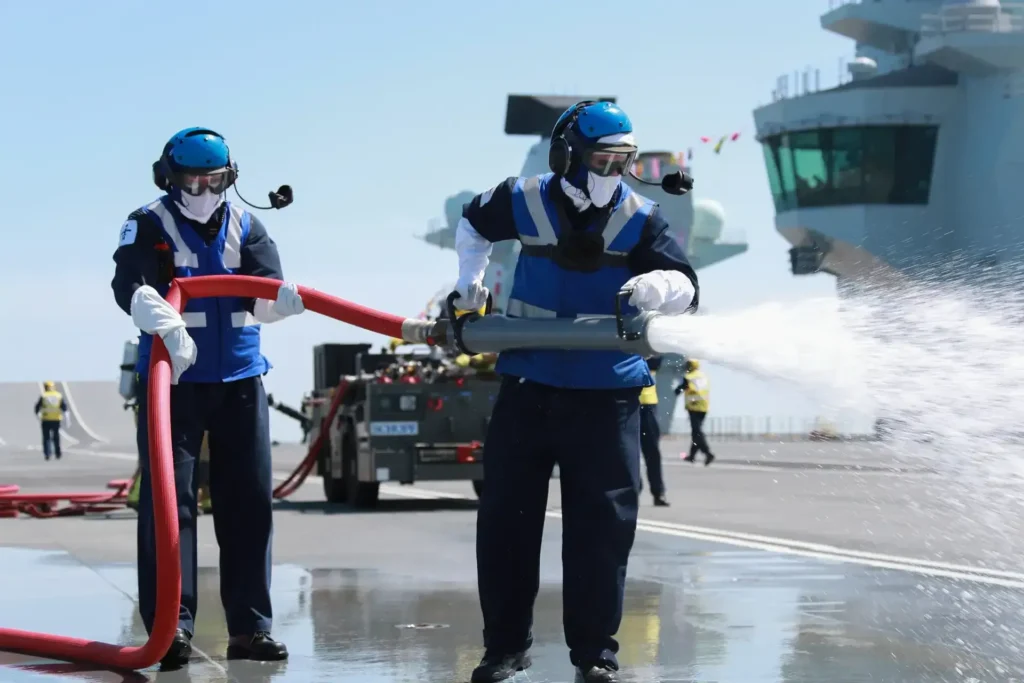Senior Safety Consultant, Jamie Nettleingham, shares his knowledge and experience.
Jamie served as an Air Traffic Control Officer in the Royal Navy for ten years which led him to work on Project Marshall (Military ATM Infrastructure and Equipment) before joining SEL as a Senior Safety Consultant in April 2020. Since joining, Jamie’s considerable experience of Air Traffic Management (ATM) has been put to good use supporting our work with the MoD and MoD suppliers. Recent projects have included support to Lockheed Martin UK Navigation Radar Programme including authoring of ATM Equipment Safety Case Reports for 6 classes of ship. He has also supported the introduction of ATM radar systems to the new T31 Frigate.

Air Traffic Management (ATM) Equipment is to attain assurance from the Military Aviation Authority (MAA) before consideration is given by MOD to accept the equipment into service onboard RN and RFA platforms. To achieve MAA assurance, a Release into Service Process (RiSP) is followed, in accordance with Regulatory Article (RA) 3134. It assesses the equipment requirements, the safety implications on achieving those requirements and provides evidence of system design, installation, testing and commissioning to ensure the equipment can be assured and accepted into service.
To complete the RiSP a large number of regulations, standards and reference documents must be satisfied. These accumulate to a complex set of requirements that are spread over a number of Defence Standards, Regulatory Articles and Civilian Publications.
The Maritime environment provides additional complexity to the RiSP where physical architecture and equipment constraints are factors in system design. These factors require a team with the knowledge and experience to ensure that safety requirements are met, presented, endorsed and lead to MAA assurance.
If a project does not meet these requirements and the MAA offer nil assurance to the ATM Equipment, it places significant risk on the authority. This can lead to the equipment not being accepted into service or being accepted with significant limitations affecting operational capability.
What is an ATM Equipment Safety Case (SC)?
A Safety Case is a document that provides information to show that risks are reduced, through auditable and evidence based arguments to a level that is considered tolerable and As Low as Reasonably Practicable (ALARP).
The Safety Case should clearly describe the evidence and arguments used to justify the safety of the equipment and its operation, so that agreement can be reached on the validity of the conclusions. It will be structured hierarchically, and the safety justification summarised in a series of ATM Equipment SC Reports (SCR). Ultimately, a SC should demonstrate how safety has been, is being and will be achieved and maintained.
Who needs an ATM Equipment SC?
In accordance with RA3132, the Delivery Team/Project Team are responsible for ensuring that a 4 Part ATM Equipment SC is developed for all new and significantly modified ATM Equipment. Meaning that, any equipment that will contribute to the provision of ATM, will require a SC, whether that be a new piece of equipment or an upgraded piece of equipment.
Who can conduct an Independent Safety Audit of ATM Equipment?
The primary role of an Independent Safety Assessor (ISA) is assessment and validation of the ATM Equipment SC work. The ISA must be contracted exclusively by the DT/PT to act on its behalf and not via the Prime Contractor/Designer.
The ISA must have a well defined role that is clearly understood by all parties. The role may change at different points through the lifecycle, but the ISA’s independence must not be compromised.
What is a Release into Service Audit Report (RiSAR)?
A RiSAR is an official report submitted by the MAA to the DT/PT. It is an audit of the Release into Service Exposition that is made up of the 4 part SC. The RiSAR will consider whether legislation and regulation has been complied with, equipment performance and safety standards have been met, requirements have been met and whether all residual risks have been agreed on behalf of the Duty Holders.
Air Traffic Management Services
SEL possesses the knowledge and experience required to navigate the complexities of the ATM Equipment RiSP. SEL has overseen various RFA and RN projects and is acutely aware of the difficulties that can be faced when authoring and independently assessing Safety Cases.
To ensure your project is provided with the necessary foresight, expertise and advice, contact SEL and speak to a member of our experienced team.







